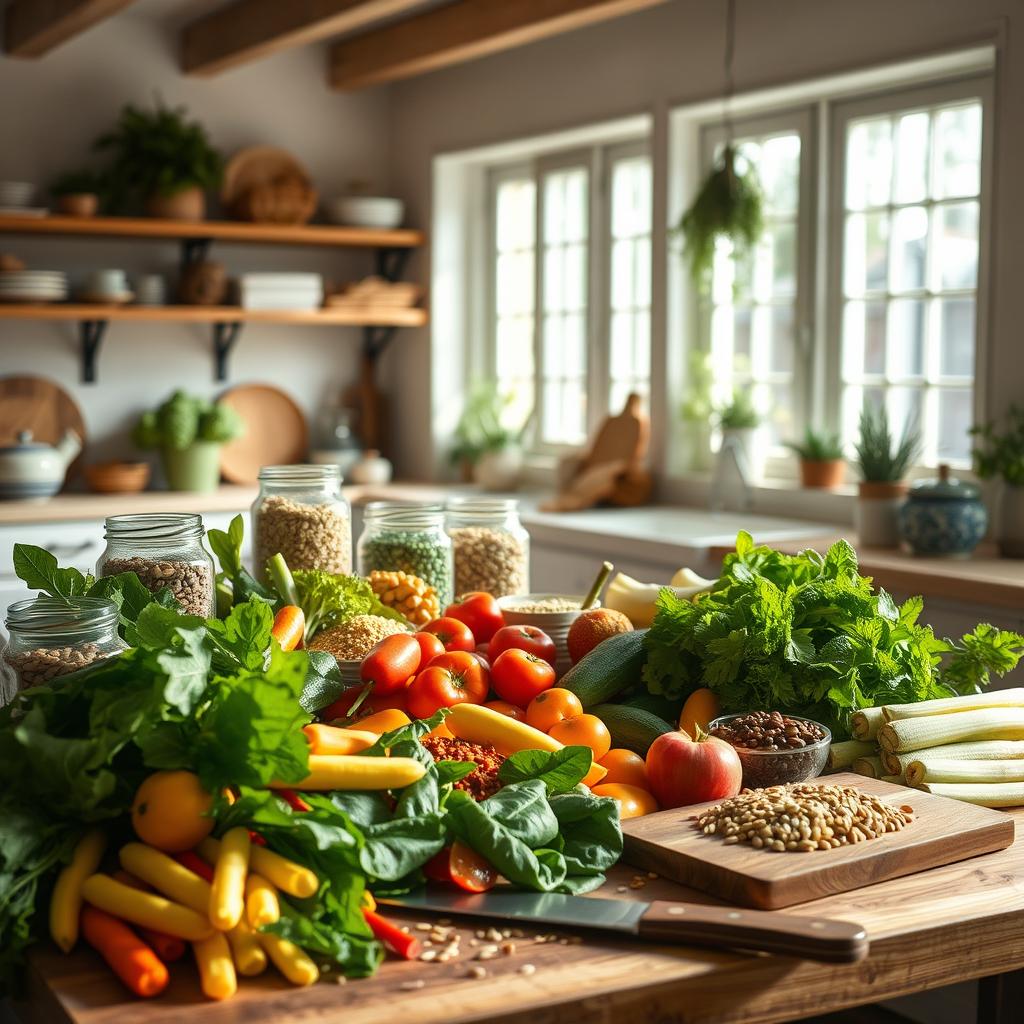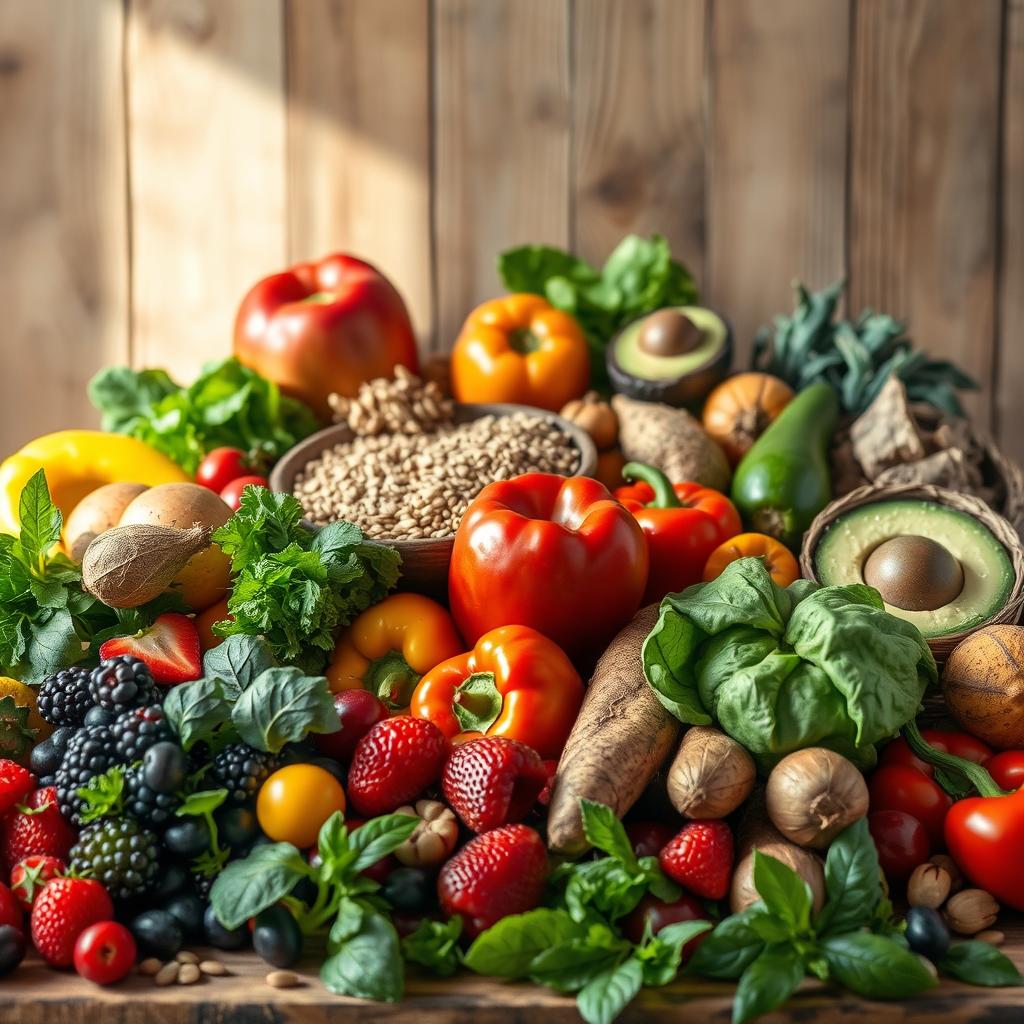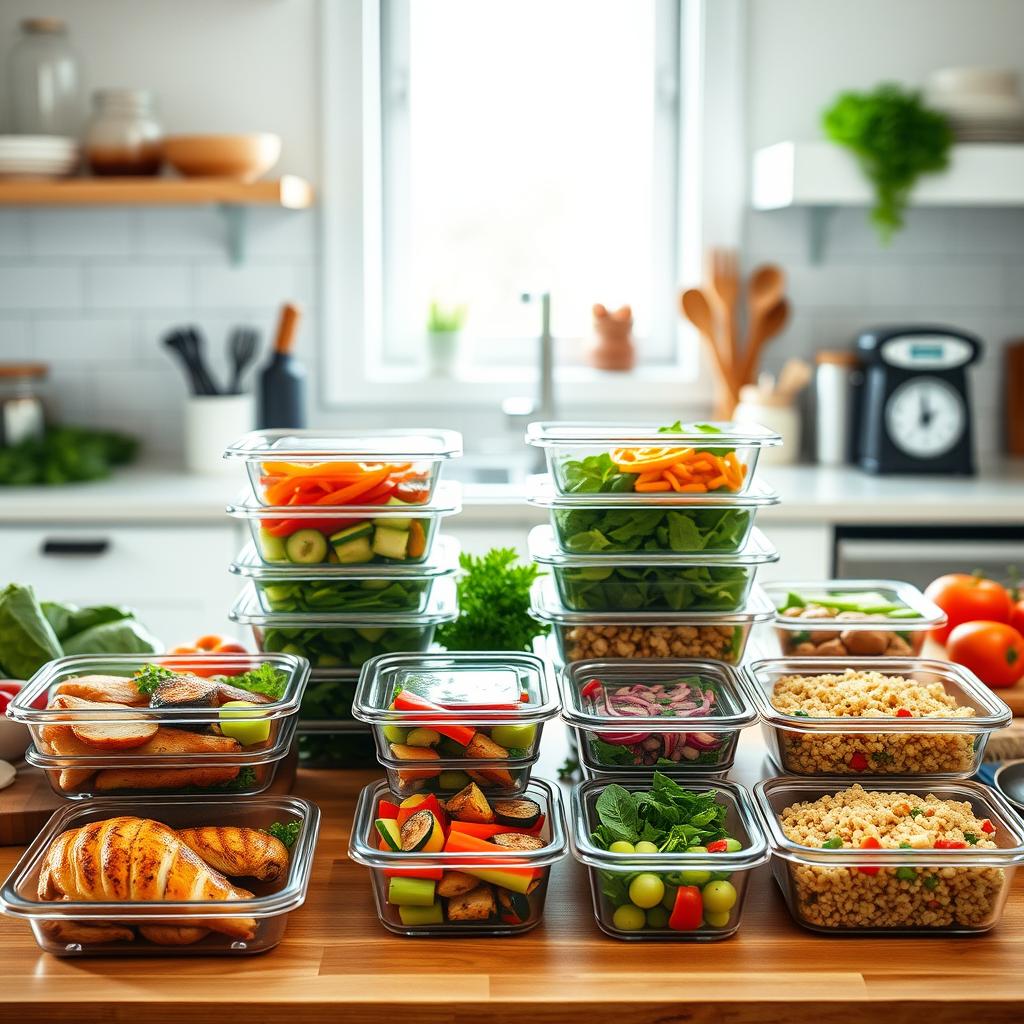Embracing a clean eating lifestyle can be a game-changer for your overall health and nutrition. It’s about nourishing your body with whole, nutrient-dense foods and minimizing processed ones. We believe that adopting this approach shouldn’t feel restrictive or overwhelming.
By focusing on eating a variety of fresh, unprocessed foods, you’ll be fueling your body with the nutrients it needs to thrive. This lifestyle choice is about making gradual, sustainable changes that work for you, not about following a strict diet. Our goal is to guide you through this journey, making it easy to understand and implement clean eating principles into your daily life.
Key Takeaways
- Understand the basics of clean eating and its benefits
- Learn how to identify whole, nutrient-dense foods
- Discover practical tips for incorporating clean eating into your daily routine
- Find out how to maintain a balanced and sustainable lifestyle
- Explore strategies for overcoming common challenges
What Is Clean Eating? Understanding the Basics
Understanding clean eating begins with grasping its core philosophy and how it differs from traditional dieting. Clean eating is not about deprivation or following a set of strict rules; rather, it’s about making conscious choices that nourish your body and promote overall health.
Definition and Core Principles
Clean eating is centered around consuming whole, unprocessed foods as much as possible. This lifestyle approach focuses on adding nutrient-dense foods to your meals rather than cutting out specific food groups. By doing so, we prioritize quality over quantity, savoring the flavors and textures of real food. The core principles include eating a variety of foods, being mindful of how different foods make you feel, and avoiding foods with additives and preservatives.
| Core Principles | Description |
|---|---|
| Eat Whole Foods | Focus on unprocessed foods like vegetables, fruits, and whole grains. |
| Be Mindful | Pay attention to how different foods make you feel. |
| Avoid Additives | Limit foods with preservatives and artificial ingredients. |
Clean Eating vs. Dieting
Unlike many diets that are temporary and focused on weight loss, clean eating is a sustainable lifestyle change. It’s not about counting calories or following a specific regimen but about developing a healthier relationship with food. Clean eating is flexible and can be adapted to different cultural preferences and dietary needs, making it a more inclusive approach to health.
The Benefits of Clean Eating for Your Body and Mind

By focusing on whole, nutrient-dense foods, you can unlock a multitude of benefits for your body and mind. Clean eating is about more than just the food on your plate; it’s about nourishing your overall health.
Physical Health Benefits
Eating clean provides your body with the essential nutrients it needs to function optimally. Diets rich in whole foods can help reduce the risk of chronic diseases, such as heart disease and diabetes. When you eat clean, you’re fueling your body with vitamins, minerals, proteins, and healthy fats that keep you fuller longer and support overall physical health.
Mental and Emotional Benefits
Clean eating also has a profound impact on your mental and emotional well-being. Research on the gut-brain connection suggests that a healthy gut microbiome can positively influence mood and mental health. By stabilizing blood sugar levels through clean eating, we can reduce mood swings, irritability, and energy crashes. Additionally, eliminating artificial additives and preservatives may improve focus and reduce symptoms of hyperactivity in some individuals. Preparing and enjoying whole foods can also foster a healthier relationship with eating, promoting mindful consumption and reducing food anxiety.
Clean Eating Food Categories: What to Include
A well-rounded clean eating diet is built on several key food categories that provide optimal nutrition. Focusing on whole, nutrient-dense foods is essential for nourishing your body and supporting overall health. By understanding and incorporating these categories, you can create a balanced and satisfying diet.
Fruits and Vegetables
Fruits and vegetables are the cornerstone of a clean eating diet, providing essential vitamins, minerals, and antioxidants. Aim to include a variety of colors on your plate to ensure a broad range of nutrients. This can include leafy greens, berries, citrus fruits, and more!
Whole Grains and Legumes
Whole grains and legumes are rich in fiber, vitamins, and minerals, making them a crucial part of a clean eating diet. Incorporate foods like quinoa, brown rice, lentils, and chickpeas into your meals for sustained energy and nutrition.
Quality Proteins
Quality proteins are vital for muscle health and satisfaction. Focus on lean proteins like poultry, fish, and plant-based options such as beans and lentils. These choices support overall health and can be easily incorporated into a variety of dishes.
Healthy Fats
Healthy fats are essential for brain health, hormone production, and nutrient absorption. Focus on sources like extra-virgin olive oil, avocado oil, and coconut oil. Enjoy avocados, nuts, and seeds as nutritious snacks or additions to meals. When cooking, be mindful of the oil’s smoke point to prevent oxidation and maintain nutritional integrity.
By incorporating these healthy fats into your diet, you can enhance the flavor and nutritional value of your meals. Try using different oils for cooking and dressings, and snack on nuts and seeds for a quick energy boost.
Foods to Limit on a Clean Eating Plan
As we continue our journey to clean eating, it’s essential to identify the foods that can hinder our progress. While focusing on whole, nutrient-dense foods is crucial, being aware of what to limit or avoid is equally important for a balanced diet.
Processed Foods and Additives
Processed foods often contain a cocktail of additives, preservatives, and artificial flavorings that can be detrimental to our health. These foods are typically high in unhealthy ingredients and low in essential nutrients. By limiting our intake of processed foods, we can significantly reduce our exposure to harmful additives and maintain a cleaner diet.
Refined Sugars and Unhealthy Oils
Sugar is a major culprit in many diets, and understanding its various forms is key to reducing consumption. Refined sugars can cause blood sugar spikes and inflammation. Instead of refined sugars, we can opt for natural sweeteners like honey, pure maple syrup, and dates in moderation. Similarly, it’s crucial to choose healthy oils like extra-virgin olive oil (EVOO), coconut oil, and avocado oil, while avoiding vegetable oils and highly processed oils that are often derived from genetically modified crops and can be inflammatory due to their high omega-6 content.
| Unhealthy Options | Healthier Alternatives |
|---|---|
| Refined sugars | Honey, pure maple syrup, coconut sugar, dates |
| Vegetable oils (canola, safflower, sunflower, peanut oil) | Extra-virgin olive oil (EVOO), coconut oil, avocado oil |
By being mindful of these dietary choices and gradually reducing our intake of unhealthy options, we can cultivate a healthier relationship with food and support our overall well-being.
Healthy Eating Made Easy: A Beginner’s Guide to Clean Nutrition in Practice
Starting your clean eating journey doesn’t have to be overwhelming; we can break it down into manageable steps. By focusing on gradual changes, we can make clean eating a sustainable part of our lifestyle.
Starting Small: First Steps to Clean Eating
The first step towards clean eating is to assess your current diet. Take a closer look at the foods you typically consume and identify areas for improvement. Begin by introducing more whole foods into your meals, such as fruits, vegetables, and whole grains.
Gradually reduce your intake of processed foods and refined sugars. This doesn’t mean you have to completely eliminate your favorite treats, but rather find a healthier balance that works for you.
The 80/15/5 Approach to Balanced Eating
One effective approach to clean eating is the 80/15/5 rule. This involves allocating 80% of your diet to whole, unprocessed foods, 15% to minimally processed foods with clean ingredients, and 5% to “junk” or indulgent foods.
| Diet Allocation | Food Category | Examples |
|---|---|---|
| 80% | Whole, unprocessed foods | Fruits, vegetables, whole grains, lean proteins |
| 15% | Minimally processed foods | Canned beans, frozen vegetables, whole grain bread |
| 5% | Indulgent or “junk” foods | Processed snacks, sugary desserts |
This balanced approach to eating allows for flexibility and makes it easier to maintain a healthy diet in the long term. By focusing on balance and making sustainable lifestyle changes, we can achieve our health goals without feeling deprived.
To sum it up, adopting the 80/15/5 approach can simplify your journey to clean eating. We hope this guide has been helpful in your transition to a healthier lifestyle. Best of luck on your clean eating journey!
Grocery Shopping for Clean Eating Success
Clean eating begins with smart grocery shopping habits! To make healthy choices, we need to be mindful of what we buy at the grocery store. By being informed and strategic, we can stock our kitchens with nutritious foods that support our well-being.
Reading Food Labels Effectively
When shopping for clean foods, understanding how to read labels is crucial. We should look for products with fewer ingredients, avoiding those with artificial additives and preservatives. Checking the ingredient list and nutrition label helps us make informed decisions about the foods we bring into our homes.
Organic vs. Conventional: When It Matters
Choosing between organic and conventional fruits and vegetables can be confusing. We should prioritize buying organic options for produce that’s known to have higher pesticide residues, as highlighted in the Environmental Working Group’s “Dirty Dozen” list. For produce with lower pesticide residues, conventional options are often acceptable. Shopping seasonally and locally can also help us make healthier choices while supporting local farmers and reducing our environmental impact.
Meal Planning and Preparation Tips for Clean Eating
Let’s dive into the world of meal planning and preparation to make clean eating a breeze! We know that adopting a clean eating lifestyle can seem daunting, but with the right strategies, it can become a sustainable and enjoyable part of your daily routine.
The Rule of Threes for Balanced Meals
Creating balanced meals doesn’t have to be complicated. We recommend following the Rule of Threes: include three main components in your meals – a quality protein, a complex carbohydrate, and a variety of vegetables. This simple approach ensures you’re getting a balanced mix of nutrients. For example, a meal could consist of grilled chicken (protein), quinoa (complex carbohydrate), and roasted vegetables (variety of veggies).
- Choose a lean protein source like chicken, fish, or tofu.
- Select a complex carbohydrate such as brown rice, quinoa, or whole wheat.
- Incorporate a variety of colorful vegetables for fiber and vitamins.
Batch Cooking and Time-Saving Strategies
Batch cooking is a time-saving strategy that involves preparing components of meals in advance. By cooking grains, proteins, and roasting vegetables in bulk, you can quickly assemble healthy meals throughout the week. This approach not only saves time but also reduces food waste and ensures you’re sticking to your clean eating plan.
To get started with batch cooking, plan your meals for the week, make a grocery list, and shop for the necessary ingredients. Then, dedicate a few hours on the weekend to preparing your meals for the upcoming week. Store your prepped ingredients in airtight containers in the fridge or freezer, making it easy to throw together a healthy meal in no time.
Conclusion: Embracing Clean Eating as a Lifestyle
As we wrap up this guide, it’s clear that embracing clean eating is a journey toward a healthier, more balanced lifestyle. We’ve explored the core principles of focusing on whole, nutrient-dense foods and being mindful of your body’s needs. It’s about finding a sustainable balance that works for you, rather than following a rigid diet. By making small, consistent changes, you can experience the numerous health benefits that clean eating has to offer. Start your journey today, and take the first step towards a healthier way of eating!


